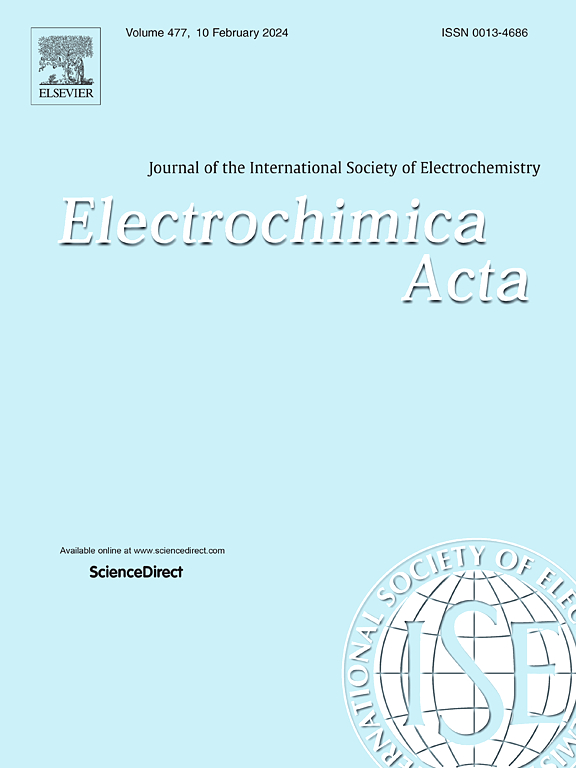聚(3,4-乙烯二氧噻吩)在缺氧细菌环境下氧化还原反应的复杂性
IF 5.6
3区 材料科学
Q1 ELECTROCHEMISTRY
引用次数: 0
摘要
在含硫酸盐还原菌(SRB)的缺氧环境下,对不锈钢上电化学聚合的聚(3,4-乙烯二氧噻吩)(PEDOT)薄膜进行了测试。电极的开路电位结果表明,细菌培养过程中底物氧化释放的电子使PEDOT膜无缝放电。随后,通过在钢表面介导硫酸盐还原反应(SRB催化)对PEDOT膜进行再氧化,保持聚合物膜的导电性,从而保证氧化还原反应的可逆性。在将PEDOT薄膜长时间暴露于细菌环境后,聚合物降解,聚合物主链中羰基的形成,元素碳的消耗,表面粗糙度的增加,以及在24小时的测试中导致电极电容下降74%。CP和钢衬底之间的电相互作用是维持PEDOT膜上可逆氧化还原反应的关键。本文章由计算机程序翻译,如有差异,请以英文原文为准。
Untangling the intricacies of redox reactions on Poly(3,4-ethylenedioxythiophene) in anoxic bacteria environment
Poly(3,4-ethylenedioxythiophene) (PEDOT) film, electrochemically polymerized on stainless steel, was subjected to testing in an anoxic environment containing sulfate-reducing bacteria (SRB). Results of the electrodes’ open circuit potentials demonstrate that the PEDOT film was seamlessly discharged by electrons given up by substrate oxidation in the bacteria culture. Subsequently, the PEDOT film was reoxidized by mediating sulfate reduction reactions (catalyzed by SRB) on the steel surface to keep the polymer film conducting, thus ensuring the reversibility of redox reactions. The polymer degradation ensued following prolonged exposure of the PEDOT film to the bacteria environment, evidenced by the formation of carbonyl groups in the polymer's backbone, depletion of elemental carbon, increased surface roughness, and a 74 % resultant decrease in electrode capacitance in 24 h of testing. Galvanic interaction between the CP and the steel substrate was crucial to maintaining the reversible redox reactions on the PEDOT film.
求助全文
通过发布文献求助,成功后即可免费获取论文全文。
去求助
来源期刊

Electrochimica Acta
工程技术-电化学
CiteScore
11.30
自引率
6.10%
发文量
1634
审稿时长
41 days
期刊介绍:
Electrochimica Acta is an international journal. It is intended for the publication of both original work and reviews in the field of electrochemistry. Electrochemistry should be interpreted to mean any of the research fields covered by the Divisions of the International Society of Electrochemistry listed below, as well as emerging scientific domains covered by ISE New Topics Committee.
 求助内容:
求助内容: 应助结果提醒方式:
应助结果提醒方式:


